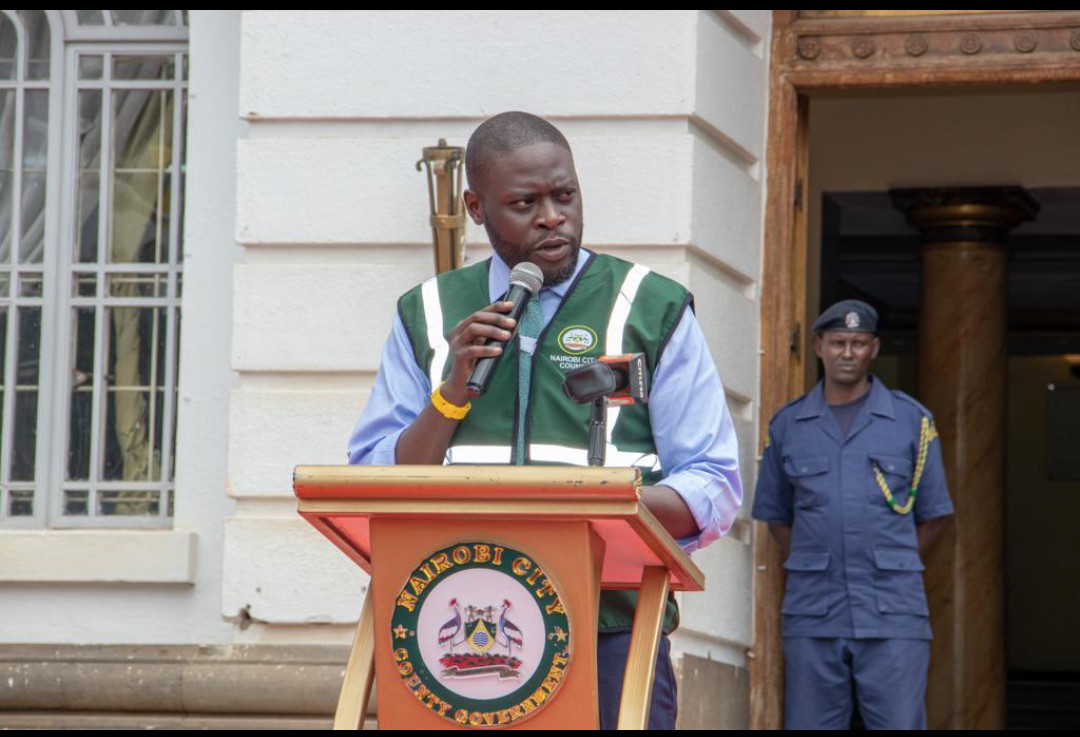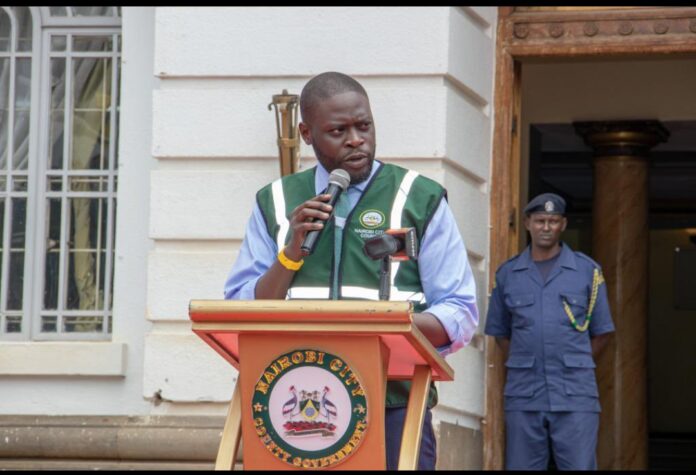By Juliet Akoth
Nairobi, Kenya: The County Government of Nairobi together with other stakeholders on Thursday commemorated the 4th annual International Clean Air Day for Blue Skies event at the Governor’s offices.
This year’s theme is “Together for Clean Air” which calls for the need for collective action and more robust partnerships across different sectors to overcome the challenge of air pollution.
This comes at a crucial time when the air pollution in Nairobi stands at 21µg/m3 which translates to PM 2.5 (particulate matter) which is approximately 400% more than what the World Resources Institute (WRI) recommends.
In addition, 8,000 lives are lost each year in the Kenyan capital due to air pollution-related causes while 13 percent of county finances is spent on averting the same.
In 2019, ambient air pollution resulted in 400, 000 premature deaths across the world while indoor air pollution resulted in 1,000,000 premature deaths. Globally, the World Health Organization (WHO) estimates that 99.99% of the world’s population breathes air that does not meet the minimum standard.
Speaking during the event, Nairobi County Governor Johnson Sakaja noted that in the past few years, there has been a sharp rise in the number of pollutants and a decline in air quality which has evidently led to high mortality rates, especially among children and other vulnerable groups like the elderly. “Every single child who misses a day of school or who has a chronic dry cough because of breathing diesel smoke should matter deeply to us, as she does to her family,” said Sakaja.

The county boss further noted that his administration is currently partnering with organizations like USAID, WRI, United Nations Environment Programme (UNEP), AirQO, Kenya Association of Manufacturers, and Nairobi Air Quality Working Group to roll out a system of county-wide air pollution monitors to constantly monitor the city’s air quality.
The county also plans on tabling an air quality bill in the National Assembly to have a legislative framework for the interventions they want to carry out. An online air quality monitoring site will also be created on the Nairobi City County website which will give access to members of the public to get information about the air quality in their environs.
Professor Engineer Bainomugisha of AirQO, an African-led initiative that leverages advanced data technologies to support and achieve clean air for all, affirmed the organization’s commitment to collaborating with the Nairobi County Government.
So far, 15 air quality monitors have already been deployed across the county courtesy of the collaboration. These monitors will improve access to air quality information as well as the availability of data which will in turn help to inform policies and decisions.
“Air pollution is a major threat to climate and health sector. It requires long-term commitment as it is not a challenge that can be addressed in one day or month,” noted Bainomugisha.
Supporting the sentiments of Professor Bainomugisha, Martina Otto of UNEP underscored the need to address air pollution and climate together. She explains, “These two issues go together because they have the same drivers and sources. We can be much more effective with our measures and financial needs if we direct our efforts in addressing both.”
However, air pollution travels distances and it is therefore a transboundary issue which means that secondary air pollution can still occur in areas and countries that are not the primary emitters.
Albeit we cannot decide how the wind blows we can definitely decide on the efforts and the measures we put to address this issue countrywide and regional-wise. This could be through collaborations like the African Integrated Assessment on Air Pollution and Climate Change.

The role of sensitization and awareness creation campaigns for members of the public on matters of air pollution came out clear at the celebrations as a way of keeping people abreast with information on the quality of air in their surroundings.
A mural created by Bankslave, an artist was launched to emphasize the role of visualization and localizing art in promoting awareness. The mural showed some of the key sources of air pollution in the city like the transport system. It also paid homage to Ella Roberta from London, United Kingdom whose death certificate showed air pollution as a cause of death, the first of its kind.
With about 70 % of Nairobi’s residents staying in informal settlements, the county administration and its partners are mapping focus areas in the settlements as they are the most affected by air pollution.
The Nairobi Declaration gives us a very strong basis to ensure that air quality is part of what we mean when we say we are building lasting resilience,” affirmed WRI Managing Director for Africa, Mathai Wanjira.
The Nairobi Air Quality Group is additionally working on the rehabilitation of polluted rivers around the city like the Nairobi River. 1000 youths have already gotten some of the green jobs with the program targeting to employ a total of 3500 youths to help keep the city clean.
During the just concluded Africa Climate Summit, Nairobi County made a commitment to be the first net zero city by 2050. The administration has already planted 950,000 trees against a target of 1.5 million by the end of this year. The county officials are also in talks with the Matatu Association private sector to embrace the introduction of electric vehicles. A borough system is also in the process of being implemented to help reduce the scramble for county services at the main office.
“We are going to add five more boroughs across the county to help with the congestion currently witnessed when Nairobians are looking for county services,” disclosed the County Executive Committee Member for Boroughs, administration and personnel, Patrick Mbogo.














